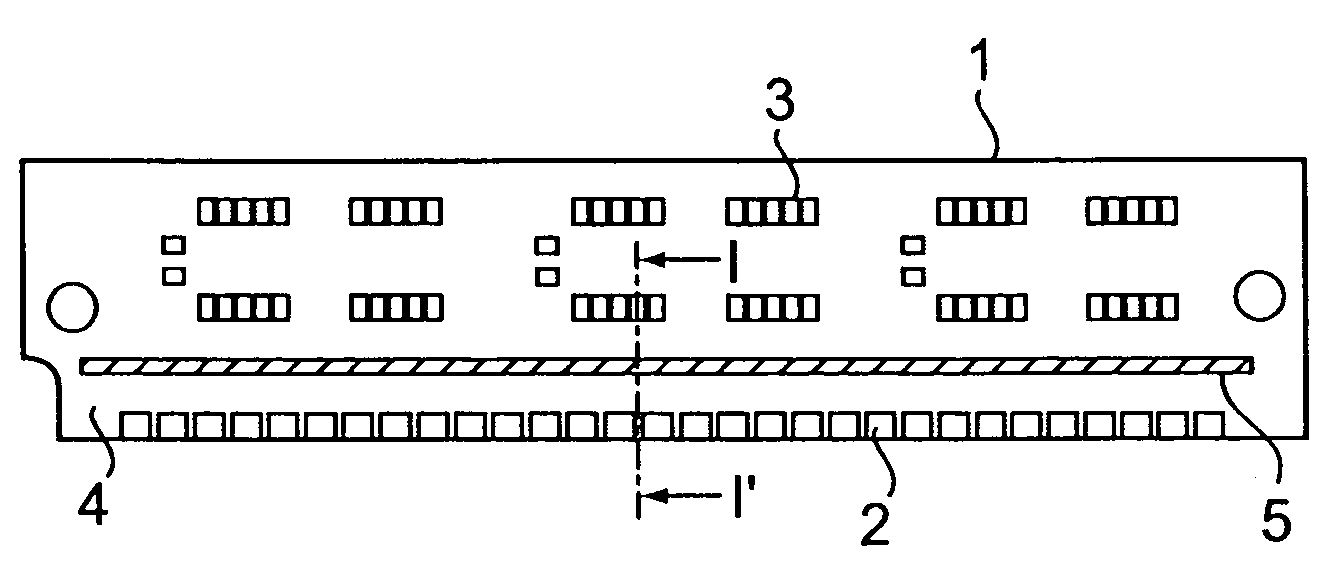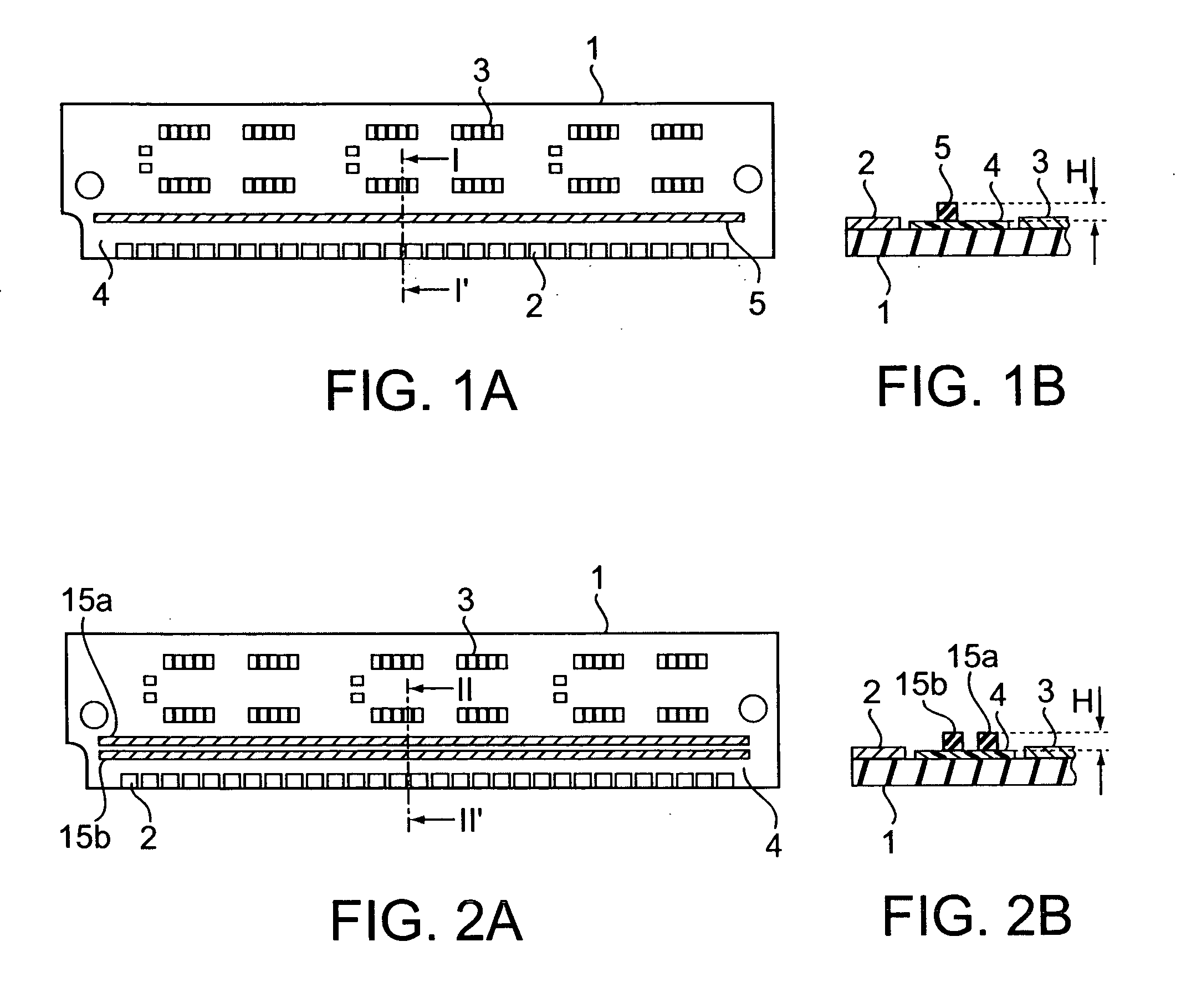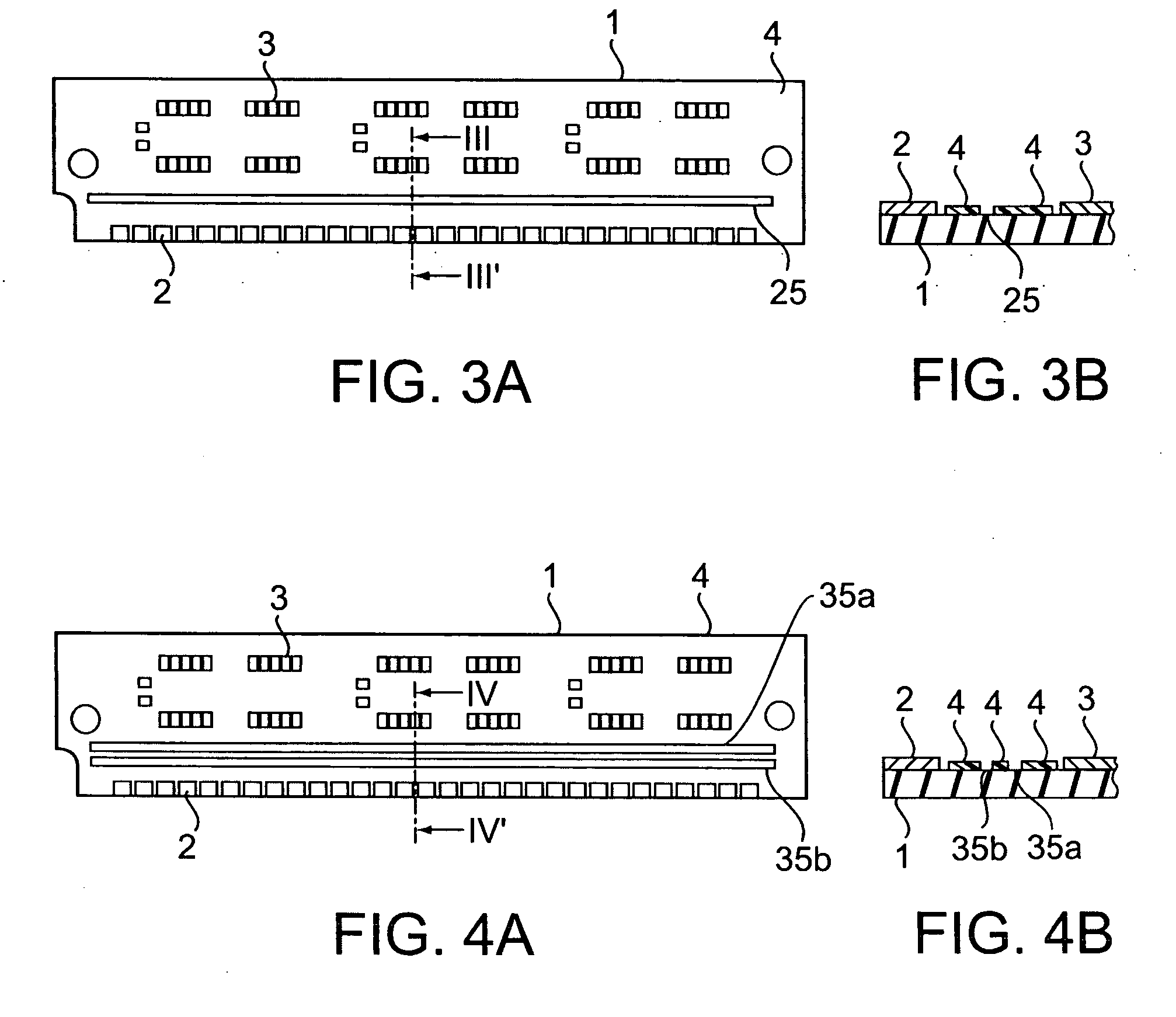Module circuit board for semiconductor device having barriers to isolate I/O terminals from solder
- Summary
- Abstract
- Description
- Claims
- Application Information
AI Technical Summary
Problems solved by technology
Method used
Image
Examples
first embodiment
[0025] According to this first embodiment, if the solder ball is formed when the ICs are mounted on the board 1 during the solder reflow process, the solder ball can not get to the terminals 2 because the wall 5 acts as the barrier. Therefore, as it is not necessary to seal the terminals 2 with tape, process time can be reduced, and the tape adhesive does not remain on the terminals 2. As a result, the number of defective boards is dramatically decreased, and the uniform quality of the board can be achieved.
[0026] Referring to FIGS. 2(a) and 2(b), two walls 15a, 15b are formed on the resist film 4 between the terminals 2 and pads 3, along the terminals 2. The first wall 15a is disposed parallel to the second wall 15b. Each wall has a length of about 10 mm, so as to extend past the group of the terminals 2, and has a width of about 0.5 mm. The walls 15a, 15b act as barriers to isolate the terminals 2 form solder. The walls 15a, 15b are formed by the same method described in the first...
fifth embodiment
[0033] According to the invention, if the solder ball is formed when the ICs are mounted on the board 1 by the solder reflow process, the solder ball can not get to the terminals 2 because the solder ball will adhered to the metal pattern 46, which acts as the barrier. Further, as the metal pattern 46 is formed together with the other circuit pattern such as the power supply line 47, no additional processes to fabricate the board are necessary.
[0034] Referring to FIGS. 6(a) and 6(b), an elongated trench 55 is formed on the resist film 4 between the terminals 2 and pads 3, along the terminals 2. Furthermore, a wall 56, which is formed using the same method described in the first and second embodiments is formed on the resist film 4. The wall 56 is disposed between the trench 55 and terminals 2. The height h of the wall is not less than 0.1 mm, which is larger than a diameter of a solder ball which is formed during the solder reflow process. The surface of the board 1 is exposed at th...
sixth embodiment
[0035] According to the invention, if the solder ball is formed when the ICs are mounted on the board 1 using the solder reflow process, the solder ball can not get to the terminals 2 because the solder ball will be stacked in the trench 55. If the solder ball runs over the trench 55, the wall 56 as the second barrier dams the solder ball. If the distance between the trench 55 and the wall 56 is smaller than the diameter of the solder ball, the solder ball will be stacked between the trench 55 and the wall 56 strongly because of a surface tension effect of the solder ball.
PUM
 Login to View More
Login to View More Abstract
Description
Claims
Application Information
 Login to View More
Login to View More - R&D
- Intellectual Property
- Life Sciences
- Materials
- Tech Scout
- Unparalleled Data Quality
- Higher Quality Content
- 60% Fewer Hallucinations
Browse by: Latest US Patents, China's latest patents, Technical Efficacy Thesaurus, Application Domain, Technology Topic, Popular Technical Reports.
© 2025 PatSnap. All rights reserved.Legal|Privacy policy|Modern Slavery Act Transparency Statement|Sitemap|About US| Contact US: help@patsnap.com



